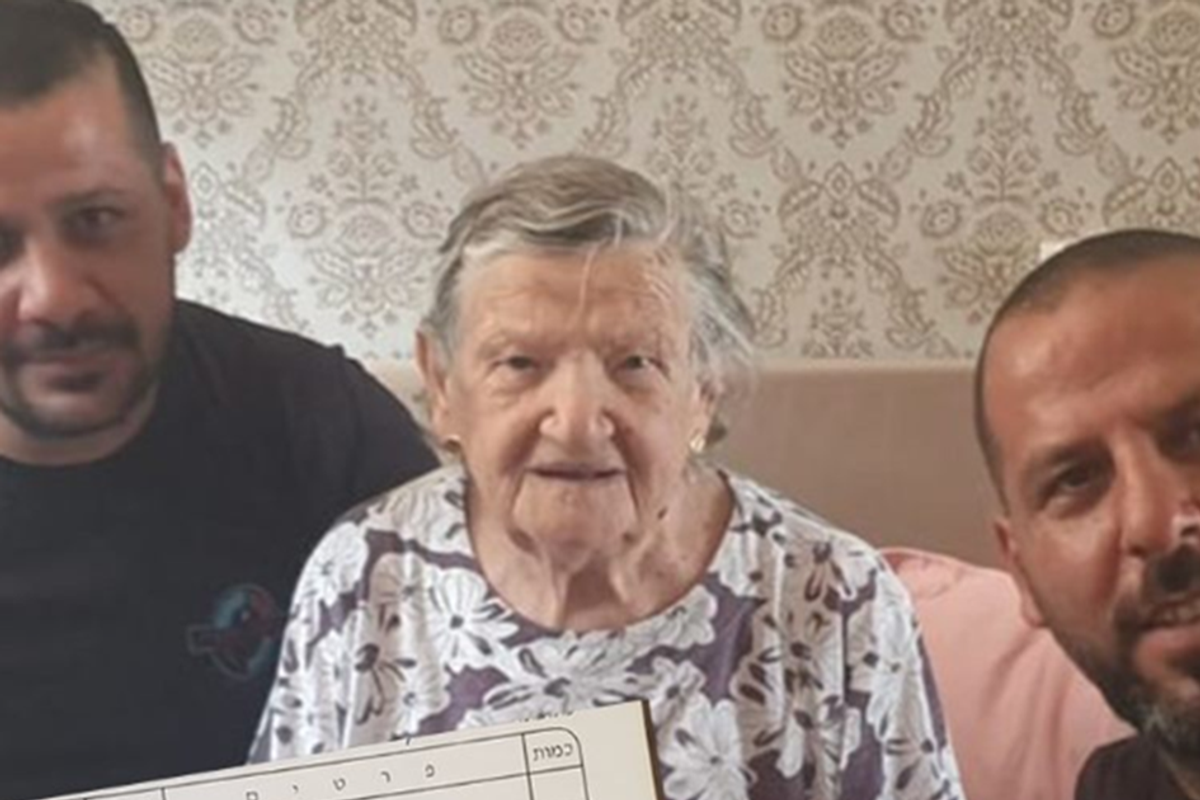They're in tears before his bionic eye is even turned on. His final reaction is priceless.
Allen Zderad has been legally blind his entire life. But his new bionic eye is giving him the gift of sight. Note: This video contains graphic footage of eye surgery from 2:09 to 2:17. If that sort of thing makes you squeamish, feel free to skip ahead.
It's been over 10 years since Allen Zderadi has seen his grandchildren and his wife Carmen.
Allen has Retinitis Pigmentosa, a degenerative eye condition that causes total blindness when the part of the retina that turns light into vision deteriorates.
But Allen received some good news: He would be the first person to experience a bionic eye technique that had been researched for 20 years.
And it worked.
Thanks to a successful procedure, Allen was able to see his wife for the very first time. Cue all of the feels.
That's the emotional part. But the let's-geek-out, science part of the story is just as amazing.
Here's how a bionic eye works.
Retinal prosthesis, aka "a bionic eye," is an implant that can restore limited vision for people like Allen who suffer from degenerative eye conditions. While the idea of a bionic eye might have you thinking of "The Terminator," it's not an eye replacement.
All images via Hipster.
Doctors start by implanting tiny microchips into the patient's eyes.
In a healthy eye, the photoreceptors take in light and send a kind of nerve-ending Morse code back to the brain explaining what it has seen. Most people suffering from degenerative eye conditions have severely damaged photoreceptors, which causes them to lose their sight. So these microchips work almost like electronic photoreceptors.
The patient then wears special glasses equipped with a digital camera that captures what's in front of them.
That image then goes to a video microchip, to a radio transmitter behind the patient's ear, and then to the microchips in the patient's eye.
Imagine a science version of the game "Telephone" but way more complicated.
The real magic is how the digital camera explains to the eye what it's seeing. In some ways, it's kind of like a game of telephone, except the message doesn't get distorted. The video camera inside Allen's glasses takes the image it's capturing and sends it to the radio transmitter as a series of Morse-code-like pulses that signal light and dark. The radio transmitter then sends the light-and-dark combination to Allen's eye, which the brain is able to piece back together.
And viola! Although the picture is pixelated, Allen recognized his wife almost instantly.
Of course bionic eyes are pretty cool, but just imagine where this technology will be in the next five to 10 years.
That future is especially exciting for Allen and his family because his young grandson shares the same degenerative eye condition. And even though his grandson may end up using the very same bionic technology later in life, Allen's hope for him is one we can all stand to learn from:
"He can succeed, and that he's defined not by his limitations but by his abilities that God has given him, so I hope he appreciates that."



 TikTok · Ale
TikTok · Ale
 Autumn created this piece when she was just 5 years old.Autumn de Forest
Autumn created this piece when she was just 5 years old.Autumn de Forest  Autumn de Forest paints Autumn de Forest
Autumn de Forest paints Autumn de Forest  An Autumn de Forest paintingAutumn de Forest
An Autumn de Forest paintingAutumn de Forest 
 Autumn de Forest stands with the Pope who looks at one of her paintings Autumn de Forest
Autumn de Forest stands with the Pope who looks at one of her paintings Autumn de Forest 


 Phone charging.
Phone charging. bill nye chemistry GIF by NETFLIX
bill nye chemistry GIF by NETFLIX 
 The Memorial to the Murdered Jews of EuropeBy Alexander Blum - Own work, CC BY-SA 4.0
The Memorial to the Murdered Jews of EuropeBy Alexander Blum - Own work, CC BY-SA 4.0 Move over, Mario Brothers.
Move over, Mario Brothers. 